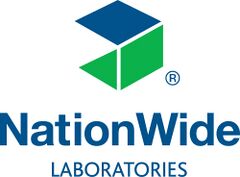Equine tracheal washes and bronchoalveolar lavage
Revision as of 17:50, 21 April 2022 by Fiorecastro (talk | contribs) (Created page with "right|link=https://www.nwlabs.co.uk/|alt=NationWide Logo|240x240px|frameless == Tracheal wash == This procedure may be performed during endoscop...")
Tracheal wash
This procedure may be performed during endoscopy or by a trans-tracheal method. It has been suggested that either gentle exercising or provoking a cough just before collection helps to obtain a representative sample. Complications are rare but occasional subcutaneous or mediastinal emphysema occurs. Subcutaneous infection due to leakage of exudate or from external contamination has been reported. Rarely the cannula can sever the catheter when the latter is withdrawn. Horses are reported to rapidly expel the severed end by coughing.
- Clip an area approximately 10 x 10cm in the region of the upper trachea
- Using a surgical scrub prepare as for any aseptic surgical procedure
- Anaesthetise the skin with a local anaesthetic
- Make a small stab incision through the skin
- Insert an intravenous cannula or a large bore hypodermic needle between two tracheal rings into the tracheal lumen. The cannula is directed caudally
- Pass a sterile catheter approximately to the area of the tracheal bifurcation
- Infuse immediately 30-60ml sterile saline (without bacteriostatic preservative)
- Rapidly aspirate as much as possible. Alternatively, the saline may be aspirated intermittently while withdrawing the catheter
- Divide fluid between an EDTA and 2 plain tubes. Add two drops of formalin to one plain tube and label. Air dried smears can be made of any thick pieces of mucus (Fig 1)
- After sample collection withdraw the catheter and cannula and apply a small amount of antiseptic solution to the skin incision
Bronchoalveolar lavage
Bronchoalveolar lavage is performed mainly, during bronchoscopy of the lower respiratory tract, allowing detailed examination and sampling from a specific location.
- It is usually necessary to sedate the patient
- Pass the endoscope or catheter into a small bronchus. After the endoscope is gently wedged in a small bronchus infuse 30-60ml of sterile saline (without bacteriostatic preservative) and immediately retrieve as much as possible by suction
- Divide fluid between an EDTA and 2 plain tubes. Add two drops of formal saline to one plain tube and label. Air dried smears can be made of any thick pieces of mucus (Fig 1)
- Withdraw the endoscope or catheter

